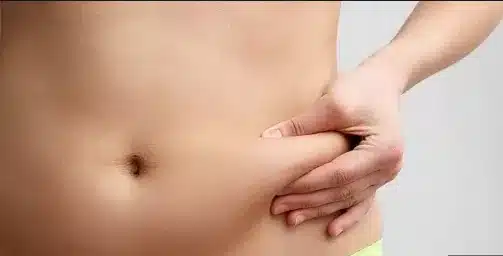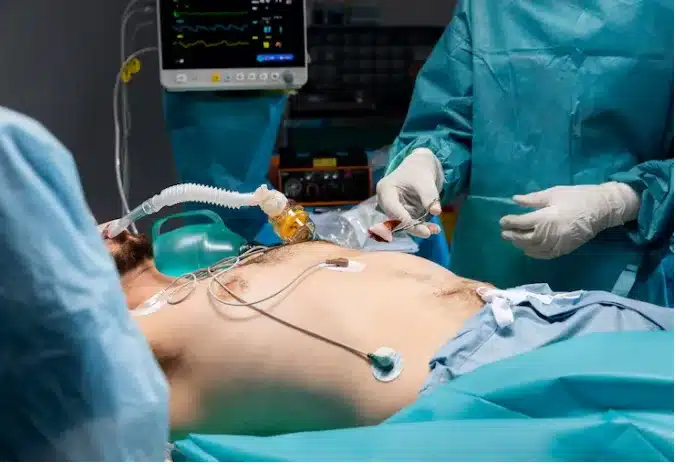Lipomatic surgery, also known as power-assisted liposuction (PAL), is an advanced surgical technique to remove excess fat deposits from specific body areas. It is a minimally invasive procedure that offers numerous benefits for individuals seeking body contouring and fat removal.
What Lipomatic Can Do
Lipomatic surgery is an effective method for removing stubborn fat deposits that are resistant to diet and exercise. It can contour and reshape various parts of the body, including the abdomen, thighs, hips, arms, waist, legs, and double chin.
The procedure is performed by a professional surgeon who uses specialized equipment to precisely target and remove excess fat cells, resulting in a more sculpted and toned appearance. Lipomatic surgery can enhance body symmetry, improve self-confidence, and create a more proportionate silhouette.
What Lipomatic Can’t Do
While lipomatic surgery can effectively remove localized fat deposits, it is not a weight loss procedure or a solution for obesity. It is important to have realistic expectations and understand that lipomatic surgery is designed to target specific areas of the body, rather than reducing overall body weight.
Additionally, lipomatic surgery cannot address loose or sagging skin. In cases where excess skin is present, complementary procedures like a tummy tuck or arm lift may be you should use Lipomatic
Reasons why you may consider using lipomatic
- Targeted Fat Removal: Lipomatic surgery allows for precise targeting and removal of localized fat deposits. It can effectively address stubborn areas that may be difficult to eliminate through traditional weight loss methods alone.
- Enhanced Body Contouring: Lipomatic surgery can help improve body shape and contour by removing excess fat cells. It can create a more sculpted and toned appearance, enhancing the natural curves and proportions of the body.
- Minimally Invasive: Lipomatic surgery is a minimally invasive procedure, which means that it involves smaller incisions and generally results in less scarring compared to traditional liposuction techniques. The recovery time is typically shorter, allowing individuals to return to their daily activities sooner.
Each type of lipomatic surgery utilizes specific tools and approaches to remove unwanted fat cells effectively.
Different Types of Lipomatic
There are several types of lipomatic techniques available, including:
- Leg Lipomatic: Leg lipomatic focuses on reducing excess fat in the legs, including the thighs, calves, and knees. It can help improve leg contour and create a more balanced lower body appearance.
- Belly Lipomatic: Belly lipomatic targets the abdominal area, including the upper and lower abdomen. It is ideal for individuals looking to achieve a flatter and more defined stomach contour.
- Waist Lipomatic: Waist lipomatic specifically targets the waistline and love handles. It can effectively sculpt the waist area, creating an hourglass figure and improving body proportion.
- Arm Lipomatic: Arm lipomatic concentrates on eliminating excess fat in the upper arms. This procedure can result in slimmer and more toned arms, enhancing overall upper body aesthetics.
- Double Chin Lipomatic: Double chin lipomatic is focused on reducing fat beneath the chin and in the neck area. It can enhance facial contours and improve the definition of the jawline.
Recovery Time from Lipomatic
The recovery time from lipomatic surgery varies depending on the extent of the procedure and the individual’s healing capacity. However, lipomatic is generally associated with a quicker recovery compared to traditional liposuction techniques. Patients may experience mild swelling, bruising, and discomfort in the treated areas, which can be managed with prescribed pain medications and compression garments.
Lipomatic, which appeals to a serious audience, can be applied to anyone over the age of 18 and with good general health. This method, which does not require general anesthesia, is also ideal for male patients. esteaura
What Age Can Get Lipomatic
The eligibility for lipomatic surgery is not solely determined by age but rather by a combination of factors, including overall health, skin elasticity, and the presence of localized fat deposits.
Who can get lipomatic surgery?
- Individuals with a stable and healthy weight: Liposuction is not a weight loss procedure but rather a body contouring technique. It is most effective for individuals who are close to their ideal weight or have a stable weight.
- People with localized fat deposits: Lipomatic surgery targets specific areas where stubborn fat accumulates, such as the abdomen, thighs, hips, buttocks, arms, or chin. Candidates should have discrete pockets of fat that they wish to address.
- Overall good health: Candidates should be in good general health, without any significant medical conditions that could pose a risk during surgery or recovery. Pre-existing medical conditions will be evaluated by the surgeon before determining eligibility.
- Non-smokers: Smoking can increase the risks associated with surgery and impede the healing process. Most surgeons recommend that candidates quit smoking well in advance of the procedure.
- Realistic expectations: Candidates need to have realistic expectations about the procedure’s outcomes. Lipomatic surgery can improve body contours and remove fat but may not drastically change one’s overall appearance or solve all body image concerns.
Summary:
Lipomatic surgery, or power-assisted liposuction (PAL), is an advanced surgical technique for effective body contouring and fat removal. It can address localized fat deposits in various body areas, including the abdomen, thighs, hips, arms, waist, legs, and double chin. The procedure is performed by professional surgeons using specialized lipomatic equipment to target and remove excess fat cells precisely.
FAQs:
- Is lipomatic surgery safe? Lipomatic surgery is generally safe when performed by a qualified surgeon.
- How long does the procedure take? The duration of the lipomatic procedure varies based on the extent of treatment.
- What is the recovery time? Recovery time after lipomatic surgery varies, but most people can resume normal activities within a few days to a week.




